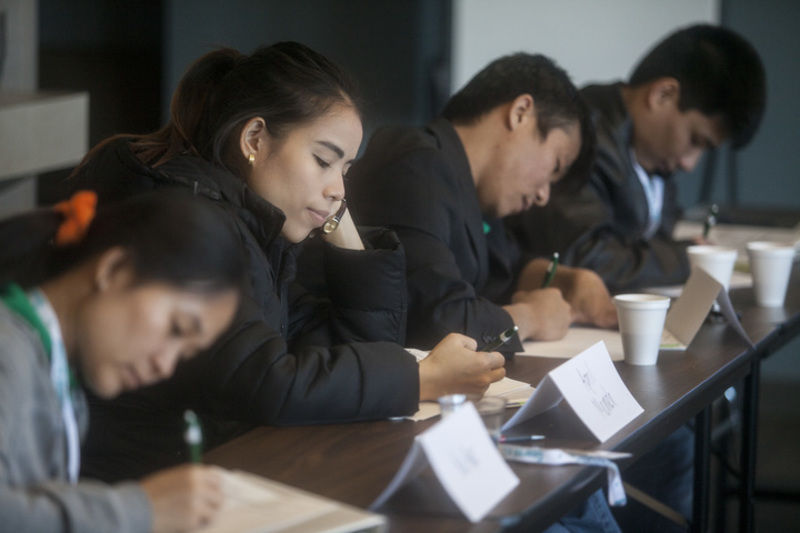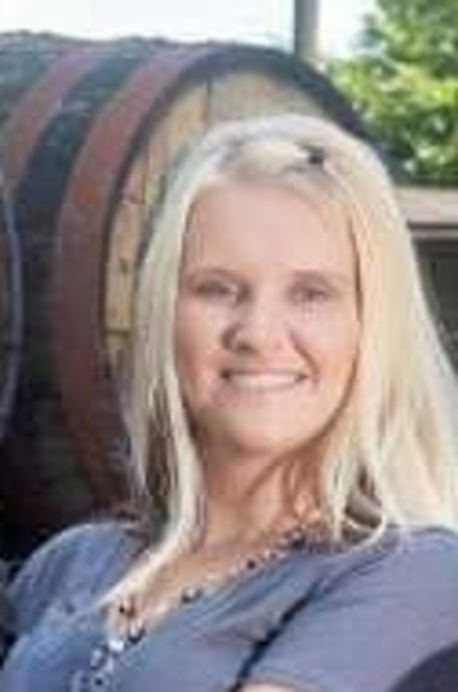Myriad services available for area’s immigrants
Published 1:00 am Sunday, April 17, 2016

- April Memeh, originally from Thailand, takes notes about leadership during the first Academy for New Americans class on Thursday at the city of Bowling Green's Neighborhood and Community Services building. (Austin Anthony / photo@bgdailynews.com)
Bowling Green’s diverse and large immigrant and refugee population – about 11 percent of the city’s population is foreign-born, according to the U.S. Census Bureau – has numerous individuals and programs working to help it acclimate to life in southcentral Kentucky.
Among them is Leyda Becker, the city of Bowling Green’s international communities liaison.
The city previously had an international liaison in the police department, and in 2012 Becker was hired to expand the outreach to the immigrant community across the city.
“I got to build a program from scratch,” she said, with the goal that all non-English speakers have knowledge of and access to city services, “so language was not a barrier.”
Becker’s work takes many forms.
She has developed a resources guide for immigrants, works with city departments so they know how to access interpreter services and acts as a general clearinghouse of information.
“People will come to inquire about everything under the sun – how to start a business, buy a home, about citizenship, how to register to vote,” she said.
Communicating the answers to those common questions, as well as news about events, resources and other information, to a diverse and multi-lingual community can be a challenge.
Traditional “channels of communication are not accessible,” Becker said to those with limited or no English proficiency.
To that end, Becker created a Spanish-English e-newsletter that comes out twice per month and has 240 subscribers.
She also leads monthly meetings of the Amigos Resource Network for Spanish speakers, to “connect them with other community providers,” Becker said, such as bankers and real estate agents.
The city also has a larger advisory council for the international community made up of about 20 members. The group is made up of the “leadership of different ethnic groups” and has become a primary outreach mechanism for the international community.
“That’s how the connections are made,” Becker said.
Community Action of Southern Kentucky also works with the city’s refugee population on employment issues.
Refugees who have been here for at least eight months but less than five years are eligible for the job finding and counseling services it offers, said Community Action Refugee Program Coordinator Heath Ray.
“We see their skills and abilities and try to put the puzzle pieces together,” to link employers with employees, Ray said.
Last year, Community Action worked with 298 refugees on such job services, he said.
In February, the city launched the Academy for new Americans, “the first project of its kind in Kentucky,” Becker said, that includes immigrants and those who came to the country with refugee status. The academy has 17 participants, hailing from eight countries and speaking 12 native languages, who are gathering monthly to get information about services and resources to take back to their communities. The academy also aims to develop leaders in the city’s non-native communities.
The academy consists of day-long meetings once each month for five months and features an inside look at city government and resources, public safety and courts, as well as team building, networking and leadership skills.
Academy participant Omega Anuzuruni, 26, has lived in Bowling Green for five years since moving here from Congo.
“This is a new country for us … it’s not easy,” said the Daymar College student at the academy’s first class in February.
“I like to learn (and the academy) helps us understand,” Anuzuruni said, adding that he plans to take what he learns during the sessions to other immigrants and refugees.
Many other organizations also cater to non-native populations.
The Bowling Green office of Kentucky Legal Aid provides legal services to low-income individuals in 35 area counties, including many immigrants, according to intake director Amanda Young.
She said the immigrants have the same sorts of issues – benefits, family issues and the like – as the rest of the population it serves. Young said Legal Aid works closely with the International Center for interpreter services, as well as the Language Line phone interpreter service.
Several area churches also provide services to immigrants. New Life Church in Bowling Green offers English as a Second Language and new citizenship classes as demand dictates, said church member Ellen Godbey.
Along with ESL and other outreach, Living Hope Baptist Church in Bowling Green offers worship space for hundreds of immigrants in five international groups: Chinese, East African, Nepalese and two groups from Burma, one for speakers of the Zomi language and one for those who speak the Chin language.
“We provide them with the opportunity for space to worship in their native language,” Living Hope Missions Pastor Jeff Carlisle said.
“One of the beautiful things is that all of the groups use our Sunday school for their kids,” Carlisle said, meaning that a Sunday school class could feature students from Rwanda, China, Nepal, Burma as well as native born students.
“That’s one of the coolest things,” he said.
— Follow city government reporter Wes Swietek on Twitter at twitter.com/BGDNgovtbeat or visit bgdailynews.com.





